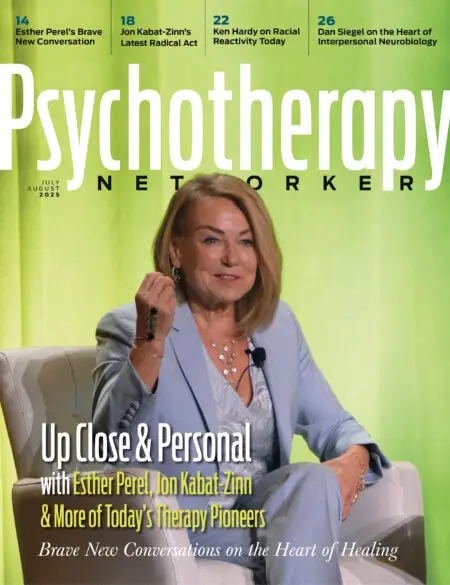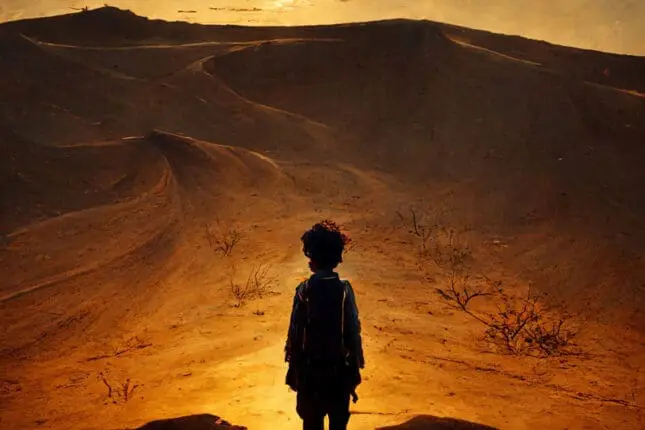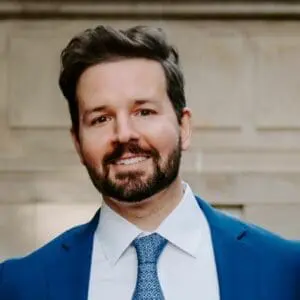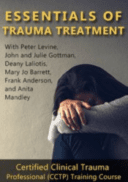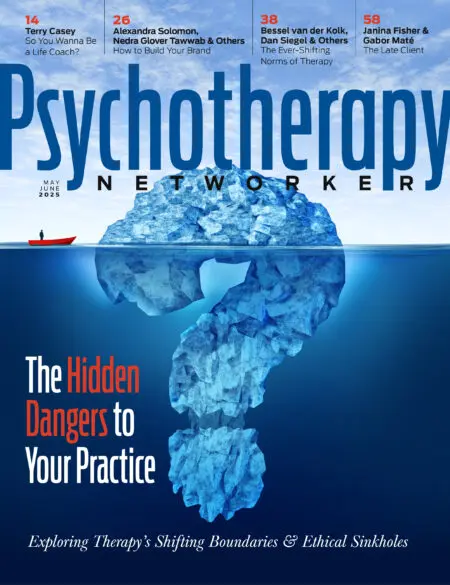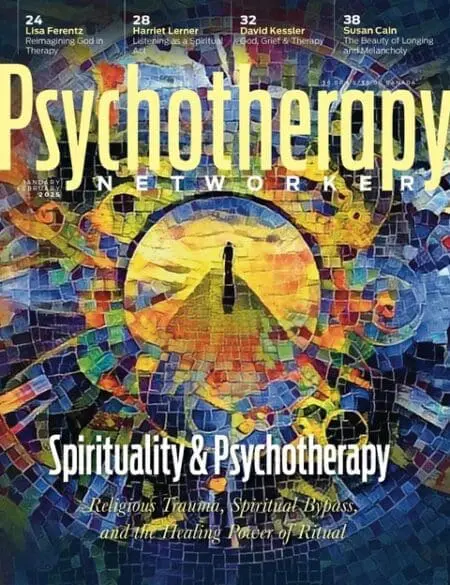What if you were living a parent’s worst nightmare, and despite all your efforts to intervene, your child was slipping into a deadly world of drug overdoses, physical violence, and child predators? After exhausting all other options, would you subject your child to a treatment that could save them, but could also expose them to danger and trauma? Would you make that choice?
Will Claxton did. Which is exactly how he found himself gripping a cold parking garage railing and peering over the edge, watching as the two chaperones he’d arranged for led his 15-year-old son toward an unmarked van below. Claxton hadn’t made this choice lightly. It had come after 14 months of trying to handle his son’s growing list of offenses: stolen credit cards out of mom’s purse, illegal drug purchases in the seedy corners of cyberspace, stints of disappearing from home, and threats of suicide.
A long list of mental health professionals had been enlisted to help, but even their best efforts fell short. “When he hit me,” Claxton explains, “we asked for inpatient therapy.” Still, the problems persisted. “Soon, I was in therapy,” Claxton continues. “I was on an SSRI. My wife was on an SSRI. Somehow, our son wound up in charge of the family. We were just trying to make it.”
One day, seconds after his son left for school—and neglected to lock his computer—Claxton bolted up the stairs to his son’s bedroom. It wasn’t long until he found something that sent a shockwave through his entire body: provocative messages between his son and someone who was clearly a child predator. This was the last straw. Claxton picked up the phone and arranged for his son to be taken to the wilderness therapy program he’d found online a week earlier, where he’d spend months under strict supervision, with barely any contact with the outside world.
Now, looking down from the garage, Claxton held his breath and waited to see if his son would go willingly. Would he try to run? Would he fight? He knew that at a moment’s notice, the situation could take a dark turn: the chaperones had been authorized to take him away by force, if necessary. “These people are going to take you to your new school,” he’d told him minutes earlier, as the van had pulled up. “I love you, and I hope this helps you.” His son had stood silently, frozen in place as Claxton drove away.
There’s nowhere to go now but up, he’d thought. This is the strongest medicine we can provide—and if this doesn’t work, nothing will.
Then, it happened: by some stroke of luck, his son willingly got in the van. Claxton felt a surge of relief as it drove off, quickly replaced by trepidation. Now what?
More Harm Than Good?
Wilderness therapy may sound benign enough. But although it’s a well-established industry with decades of history, these programs have also been operating under the radar and largely unchecked, attracting an enormous amount of controversy over accusations of duplicitous marketing as well as dangerous—and sometimes deadly—practices.
A branch of what’s often referred to as the troubled teen industry, which includes facilities like youth residential treatment centers, boot camps, and therapeutic boarding schools, wilderness therapy programs have been used to treat at-risk adolescents and teenagers for over half a century. There’s a shortage of public information about these programs, but there are estimated to be between 25 and 65 operating in the United States today, with about 12,000 children enrolled annually. Most of these programs have three components: they take place in nature, involve overnight stays, and include group activities, usually under the supervision of mental health professionals.
Wilderness therapy programs are well-suited to “children who offend,” notes a 2022 study from the National Institutes of Health, as they “offer excitement and perceived risk, which meets the desire for high arousal.” They “promote peer relationships, emphasize community collaboration, and offer the opportunity for the development of trust, effective communication, and problem-solving abilities.” A 2022 meta-analysis published in the journal Criminal Justice and Behavior calls them “a potentially effective tool for addressing delinquent behaviors among youth,” and “a promising form of diversion programming.”
But since becoming popular in the 1970s, wilderness therapy programs have been marred by countless accusations of child abuse, including kidnapping and false imprisonment, forced labor, stress positions, strip searches, solitary confinement, and psychological abuse. At least 10 deaths have been attributed to wilderness therapy programs, the most recent occurring in a North Carolina program last February, where a 12-year-old boy died less than 24 hours after arriving at camp. His death was later ruled a homicide, from “asphyxia due to smothering.” Days later, a woman filed a lawsuit against the same organization, saying she’d been sexually assaulted by a fellow camper in 2016.
Even when these programs aren’t causing overt harm, many people question whether they’re as therapeutically informed as they claim to be. Some employ no therapists, or only hire them as consultants, while others employ clinicians who are underqualified or improperly trained to work with high-risk youth. Although bills to regulate troubled teen facilities have been proposed in Congress every year from 2007 to 2018, nearly all of them have failed to pass.
Additionally, there’s virtually no regulation within the industry, with no governing body or licensing board that dictates how these programs should be run or by whom. The National Association of Therapeutic Schools and Programs (NATSAP), a self-governing membership organization founded in 1999, does offer “best practices” as well as “ethics and values” recommendations for programs, but has no jurisdiction over those that aren’t members—and notably, it’s previously opposed legislation seeking to impose health and safety standards.
It turns out that some of the most successful efforts to reform wilderness therapy programs have been spearheaded by former attendees. In 2023, Netflix released the documentary Hell Camp: Teen Nightmare, which interviews survivors of the infamous Challenger camp, which came to prominence in the 1980s and included a 63-day, 500-mile hike through the Utah desert. “[The campers] were emaciated, they were dirty,” says one witness interviewed. “You couldn’t even tell they were kids.” One of the most prominent reform advocates has been Paris Hilton, who’s spoken publicly about the abuse she suffered during her 11-month stay at a Utah troubled teen program in the 1990s, where she was reportedly beaten, subjected to strip searches, and force-fed medication. Appearing before the Utah State Legislature in 2021, Hilton’s testimony helped pass a bill that increased state oversight and required documentation of the use of restraints.
“No child should experience abuse in the name of treatment,” she told reporters afterwards.
It’s hard to understand why any parent would send their child to a wilderness therapy program after hearing horror stories like these. But every year, thousands of them, like Claxton, take this leap of faith. Why?
A Most Desperate Hour
“When one learns to live off the land entirely, being lost is no longer threatening,” wrote Larry Dean Olsen in his 1967 book Outdoor Survival Skills. A flinty, bearded outdoorsman, widely considered the father of modern wilderness therapy programs, Olsen cut his teeth leading failing college students from his alma mater, Brigham Young University, on month-long expeditions across the Utah wilderness throughout the 1970s. Taken with the success of the recently founded Outward Bound, Olsen and a handful of collaborators soon decided to create their own wilderness program, only theirs would have a more defined treatment element. The wilderness, he wrote, could be incredibly transformative: It bred “survivors.”
“A survivor possesses determination, a positive degree of stubbornness, well-defined values, self-direction, and a belief in the goodness of humankind,” he wrote. “He does not fear pain or discomfort, nor does he seek to punish himself with them.” In Olsen’s mind, the wilderness wasn’t just restorative; it was curative. Hardship built character—especially in those he dubbed “comfort-oriented individuals.” With Paul Bunyan-like spirit, Olsen implored his followers to “rise above the comfort-seeking,” to tame themselves in wild acts of self-sufficiency and self-discipline.
Over 50 years later, Olsen’s message still resonates in wilderness therapy program marketing. Websites left and right are peppered with images of flannel-clad hikers, winding trails, fog-capped mountains, and luminous foliage. There are photos of smiling children and facilitators, and hands gently placed on shoulders. There are phrases like healing hearts and rebuilding trust. And your son or daughter isn’t “violent” or “addicted,” they’re maladaptive. It’s easy to see how a parent, in a moment of desperation, might think to themselves, Hey, this place doesn’t sound half bad.
But by the time they start considering a wilderness therapy program, many parents are also reckoning with a hard truth: “the system had failed us,” as Claxton says. By the time he began looking, his son had been to every mental health practitioner imaginable. He’d seen therapists, psychiatrists, and a pediatrician. He’d been to hospitals and outpatient facilities. One clinician treated his ADHD. Another tried body work. And another worked on minimizing his suicidal thoughts. But the problems continued. Claxton says he knows why. “Nobody worked together, so nothing was getting fixed,” he explains. “I was at my wit’s end.”
This is exactly what wilderness therapy programs are banking on: families are burned out, disillusioned, and feel like they’ve exhausted all other options. Many parents know deep down that these programs aren’t perfect, or that their agendas are opaque, but for those in crisis, they feel like the only option—which is why they charge a fortune, critics say. Wilderness therapy is a multibillion-dollar industry—worth $300 million in Utah alone, where many programs are based.
“It’s a money-making machine,” says therapist Kate Truitt. “It’s a franchise, like McDonalds.” A trauma and resilience specialist who estimates she’s worked with roughly 30 wilderness therapy campers and their families over the years, Truitt says that many of these programs begin with “good hearts and hopes” but eventually get corrupted by money and prey on parents’ desperation. “They have the marketing machine behind them,” she says, “and they’ll use search engine optimization to home in and describe someone’s child to a tee: If your child is doing this, then you need to intervene immediately, otherwise they will die or they will end up homeless.”
For parents like Claxton, the promise of relief in exchange for fistfuls of cash is a no-brainer. He says his son’s program cost about $400 a day, totaling almost $50,000 with transportation and gear. “We were fortunate,” he says, “but most people don’t have 50k sitting around. I’ve heard of parents taking second or third mortgages on their house to pay for this—and we would’ve if we’d had to.”
A Subtle Kind of Trauma
Therapist Britt Rathbone says he empathizes with parents who find themselves in Claxton’s position. “We have a mental health delivery service problem in our country,” he says, “and a lot of the time, it’s not visible.” In the ‘80s and ‘90s, “you might’ve sent your teen to a local psychiatric hospital, where a team could tinker with medication and see how they responded while providing good therapy. That doesn’t happen anymore, and these programs have emerged in their absence.”
But Rathbone says wilderness therapy programs are often a poor and dangerous substitute. In his 40 years working with “difficult to treat” adolescents and teens, including about two dozen who’ve been to wilderness therapy, children almost always return from these programs with some form of trauma. There are obvious traumas to process, like when Rathbone worked with a teenager who’d witnessed a fellow camper’s suicide, but there’s another, more subtle kind of trauma these children often experience.
“They frequently come back with an acute stress reaction that’s very similar to PTSD,” he says. “The way you get out of these programs is compliance. They say, ‘If you do what you’re told, you’ll get out—and you will not leave here until you do.’ It’s like how people talk about ‘breaking a horse’—getting it to comply. In a sense, these kids are broken. And many of them were already distrusting of adults to begin with. Can you imagine how much angrier and distrustful this would make you? It’s heartbreaking. It’s unconscionable and unacceptable.”
There’s little about these programs that even constitutes treatment, Rathbone adds. Learning how to live in the wilderness doesn’t translate to being able to function back home. And in many instances, he says, program facilitators ignore diagnoses and resort to one-size-fits-all behavioral interventions. But even if treatment is ineffective, Rathbone says parents can be reluctant to call the experience a failure.
“It’s hard for parents to admit,” he explains. “They’ve spent tens of thousands of dollars on this, and when their kid calls and says, ‘Get me out of here,’ the staff tell them it’s a normal response. What are they supposed to think?”
Other parents, Truitt adds, struggle with deep shame after their child returns home from wilderness therapy, wrestling with the fact that a choice they made has caused their child immense harm and pain. “Many times there’s a massive and sometimes irreparable rupture between parents and children,” she explains, “where the work becomes holding the space for that grief and loss, those feelings of responsibility and failure.”
But therapy with these families isn’t just trauma work as usual, says Truitt. “There’s incredible attachment disruption, and their sense of self has been deeply harmed. Some campers are recruited as enforcers, or do things they would normally never do to another human being because it’s the only way they know how to survive, so there’s a moral injury, too, which is such a tender wound. On top of this, the mental health providers who were supposed to help them were often a big part of the harm, so by the time they come to us, there’s a significant level of distrust and guardedness—and I fully respect it. I get it.”
Helping kids process trauma and parents untangle the truth of their wilderness therapy experience can be a long, complicated process. But Rathbone says therapists are often consulted by parents before they enroll their child in a wilderness therapy program, which presents a good opportunity to propose something similar to what inpatient treatment used to provide 30 years ago: “a reset,” as Rathbone calls it.
“We’re looking for containment,” he explains. “We can do that by removing the stimulus, the thing that’s creating the child’s problem, whether it’s the peer group or an illegal substance. The hope is that we get them in a different environment where we can see what’s really going on with them. That’s when parents realize it’s not just a matter of ‘my child just doesn’t listen.’”
Rathbone acknowledges that these resets are hard to come by nowadays, since effective, care-focused inpatient hospital stays are no longer widely available. But this doesn’t mean that wilderness therapy—which he says promises this kind of reset in its slick marketing and sleek websites—is necessarily the answer.
Still, some parents may ultimately choose wilderness therapy anyway, and Rathbone says that’s their right. “I tell them they’re going to have to make their own decision as a family,” he adds. “Our job is to help them look at the potential benefits and risks. But those of us who work with kids and teens can give them a less varnished view.”
One of the Lucky Ones
Will Claxton’s son spent four months in wilderness therapy, where he was grouped with seven other teens, including one who’d been addicted to meth and another who’d killed a family member. Within two weeks, six of the campers had tried to run away—and were quickly caught. After all, they were in the middle of nowhere. But Claxton’s son wasn’t one of them.
Every day, the teens and facilitators would hike, make camp, cook dinner, and clean pots. “We intentionally make the day boring,” one of the coordinators had told Claxton. This was shock therapy, in the sense that life suddenly became very simple for these boys. “That’s when you start working on yourself,” Claxton says. “The day becomes all about solving your problems.”
On Tuesdays and Thursdays, Claxton’s son would meet with his assigned therapist, who’d rendezvous with the campers along their route. Participation was expected, but not obligated. There was homework, too. Every Wednesday, the therapist would relay to Claxton how his son was progressing. A month in, he was doing well.
Claxton’s only direct communication with his son came through letters. And slowly, he says, those letters began to show more introspection. “He wasn’t mad at the world, and he wasn’t angry,” Claxton recalls. “Maybe it was the writing, or the therapy, or because he was working on things.” Maybe, he thought, there’s hope after all.
Ten weeks into the program, Claxton and his wife were offered the chance to see their son in-person. So they got in their car and drove eight hours west. When they arrived at the camp, they were shocked by what they saw. For the first time in years, Claxton says, his son was thankful. “I’m not ready to go,” he said. It was a moment of catharsis, a light at the end of the tunnel. “He starts crying, I’m crying, mom’s crying,” Claxton recalls. They snapped a photo together, which now hangs on Claxton’s refrigerator. One month later, their son had graduated from the program.
Today, Claxton’s son is 16. He’s at a boarding school, where he’s on the honor roll, well-liked by his teachers, and interested in a career in computer science. He’s not completely through the woods yet, Claxton adds, but the darkest days are behind them. “He was a smoking ball of fire,” he says, “but now, he will launch.”
So what happened? Why did this wilderness therapy story have a happy ending? Claxton thinks back to the morning his son was taken away. “I’d heard that the deciding factor for kids’ success in therapy is their relationship with their parents,” he says. “Maybe I just want to believe that, but I like to think that on that morning, there was still a piece of him that knew he could trust his dad, and that as he went through the program, he still trusted us.”
The research backs this up. According to a 2021 study in the journal Child & Youth Services, campers are likelier to have positive experiences after treatment based on their experience with involuntary transport. “I have seen these programs be effective when the child has some willingness,” adds Rathbone. “Some of these kids basically get kidnapped, which is a trauma criterion. We know that therapy works when we have buy-in.”
Claxton acknowledges that he’s one of the lucky ones. Yes, wilderness therapy is a poorly regulated industry, he admits, and yes, there are some horror stories. “But I think that paints a broad stroke on an industry in which there are a hell of a lot of people doing a lot of good,” he adds. “Without them, a lot of kids are going to fall through the cracks.”
Truitt says parents who are contemplating wilderness therapy for their child need to do one thing and do it well: research. “Call around,” she says. “Call therapists. Ask them about the program beforehand. Call that program. Ask them about other programs. The marketing is really good, and this can feel like the answer, especially when we’re fearful.”
With its checkered past and ongoing problems, is there still hope for wilderness therapy? Some signs indicate it may be turning a corner. In December, the Stop Institutionalized Child Abuse Act, a bipartisan bill that aims to protect children in residential programs, was signed into law by President Biden. That same month, the National Association of Therapeutic Schools and Programs (NATSAP) merged with another membership organization, The Outdoor Behavioral Health Council, to provide a more robust oversight body.
As for Claxton, he isn’t shy about sharing his story, and hopes it will inspire other struggling parents to keep the faith. But there’s also a weariness in his voice, a lilt that only comes from going through hell and back, and living to tell the tale.
“Wilderness therapy is a little like Fight Club,” he says. “You usually don’t talk about it unless you’re with a parent whose kid was also in wilderness therapy. This isn’t something you advertise. It’s something you’re incredibly happy is behind you, and you’re ready to move on.”
Chris Lyford
Chris Lyford is the Senior Editor at Psychotherapy Networker. Previously, he was assistant director and editor of the The Atlantic Post, where he wrote and edited news pieces on the Middle East and Africa. He also formerly worked at The Washington Post, where he wrote local feature pieces for the Metro, Sports, and Style sections. Contact: clyford@psychnetworker.org.
